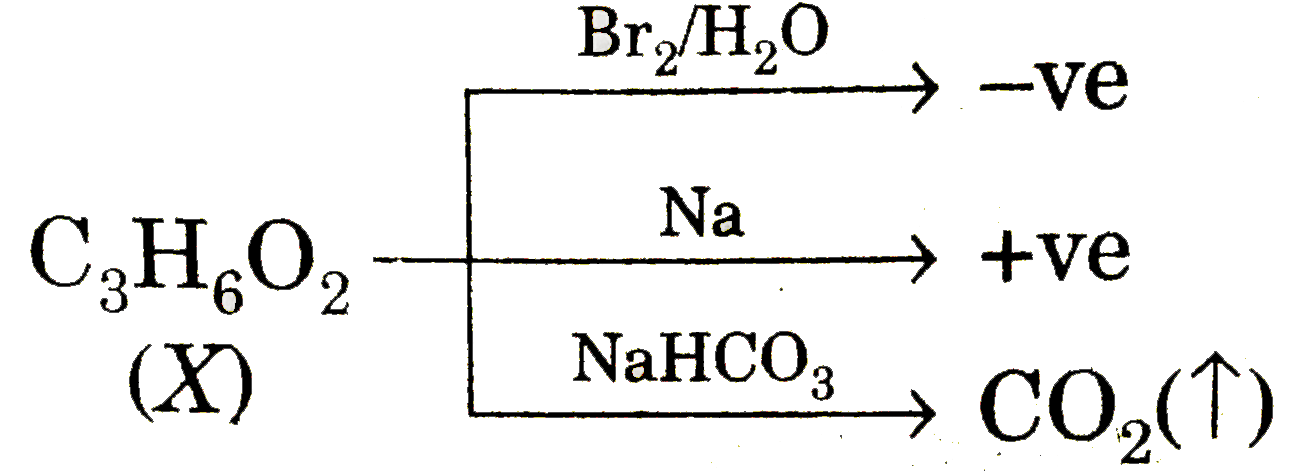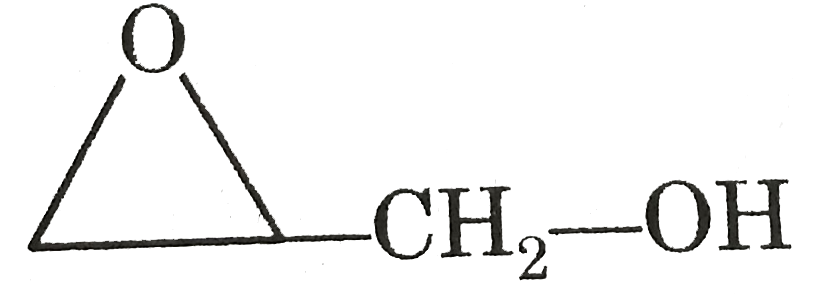Aspirin can be prepard from salicylic acid (C7H6O3) and acetic anhydride (C4H6O3) according to the equation
2C7H6O3+C4H6O3→2C9H8O4+H2O
This reaction gives a yield of 74%, provided that a 50% excess of acetic anhydride (the cheaper reagent) is used. If a chemist wants to prepare 20.0g of aspirin in the laboratory, what mass of the of acetic anhydride should be use ?
A
20.7g
B
11.5g
C
23.0g
D
7.65g
Text Solution
The correct Answer is:B
2C7H6O3+C4H6O3→2C9H8O4+H2O
If 100% yield
360g of Asprine required=102g of acetic anhydried
1g of Asprine required =102360g of acetic anhydried
20g of Asprine required =102360×20g of acetic anhydried
But for 74% yield acetic anhydride required is =7.657g
But chemist taking 50% exceeds, So =7.65+7.65×500100=11.5g
|
Similar Questions
Knowledge Check
C3H6O2
 ACH3−CH2−COOHB
ACH3−CH2−COOHB CCH3−CO−CH2−OHD
CCH3−CO−CH2−OHD
Aspirin, C9H8O4, is prepared by the acetylation of salicylic acid, C7H6O3, according to the following equation :
C7H6O3+(CH3CO)2O→C9H8O4+CH3COOH
If the yeild of this reaction is 83%, What mass of salicylic acid would be required to prepare 1.0kg of aspirin?A0.77kgB0.62kgC1.2kgD1.3kgSame mass of glucose (C6H12O6) and acetic acid (CH3COOH) contain:
Asame number of carbon atomsBsame number of hydrogen atomsCsame number of oxygen atomsDall of the above
Balance the following equations in proper medium
Cr2O2−7+C2H4O+H+→C2H4O2+Cr3+
View SolutionFor the reaction ,
2C2H6(g)+7O2(g)→4CO2(g)+6H2O(l), the rate of disappearnce of C2H6(g) :
View SolutionThe inversion of cane sugar is represented by
C12H22O11+H2O→C6H12O6+C6H12O6
It is a reaction of
View SolutionThe compound X(C3H6O) on oxidation gives a compound Y(C3H6O2) . The compound Y is
View SolutionThe inversion of cane sugar is represented by
C12H22O11+H2O→C6H12O6+C6H12O6
It is a reaction of
View Solution
